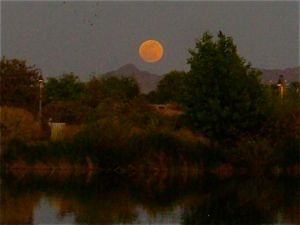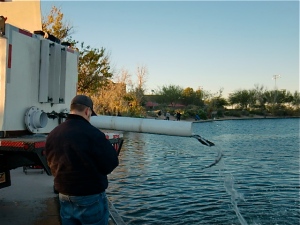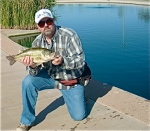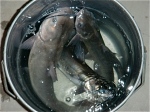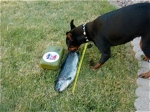 I’ve had a few comments on my You-Tube videos asking for information on where I fish on a specific Urban Lake. The answer isn’t necessarily where I fish on any one of the Urban Lakes, but how I fish the lake. In the next few articles, I’ll try to share my techniques and hopefully make your Arizona Urban Lake fishing (now called “Community Lake Fishing”more satisfying.
I’ve had a few comments on my You-Tube videos asking for information on where I fish on a specific Urban Lake. The answer isn’t necessarily where I fish on any one of the Urban Lakes, but how I fish the lake. In the next few articles, I’ll try to share my techniques and hopefully make your Arizona Urban Lake fishing (now called “Community Lake Fishing”more satisfying.
First and foremost, I loved the Arizona Urban Lake program. In fact, having relocated back to New Jersey it is probably the one thing I miss the most about living in Arizona. The Urban Lakes were my go-to fishing water. Any time I could spare even as little as an hour I would be on one of the lakes. And that is the first consideration as to how I would fish any of the lakes; time.
If I had two hours to travel and fish I would fish the Urban Lakes with a “Once-around” strategy. On days that I had three to four hours to fish (again with about and hour travel), I would either fish one of the lakes with more attention to detail or plan on fishing two of the Urban Lakes. Days where I could devote at least five hours to fishing, I would fish the “big-waters” – Lower Salt River, Canyon Lake or Apache Lake.
What is my “Once-around” fishing method?
As to Urban Lake selection, the three closest lakes to my home which was in San Tan Valley were: Veteran’s Oasis, Water Ranch and a small Urban Pond in Gilbert. I do not name it here as fishing pressure really put a damper on fruitful days spent there; however, those that are curious can read any of my past fishing journals and get the name. Generally speaking, these lakes were more often than not my “once-around” lakes.Additionally, depending on where my work took me, I would get some fishing in on another Urban Lake. For example, if I had to be in Mesa, I would fish Red Mountain Lake before my work. Lastly, time of day was not a factor, if my mornings started too early to fish, then I would fish at night.
Prior to fishing, I would have three fishing rods prepared and ready with all lures tied and set. My usual rod set up was;
Fly Rod – 7-8 foot with a 5-6X tippet depending on time of year. I always start with a wet fly combination involving a streamer with a small nymph dropper fly. If fishing is super slow, I’ll change this to a small dry fly and fish bluegill instead of skunking out;
I would also pre-rig two bait casting rods. The pre-rig would depend on the species.
In addition to the above fly rod:
Bait caster # 1 – this will have a fast exploratory lure, usually a rattle trap in a weather appropriate color. In summer months; however, and if I’m on the water by sunrise, this rod will be outfitted with a top water proper;
Bait caster # 2 – usually with a spinnerbait or a soft plastic lure to use as a follow-up to rod number 1.
In addition to the above fly rod:
Bait caster # 1: curved hook heavily weighted and baited with week old shrimp that I would salt.
Bait caster # 2: rigged for Largemouth bass to fish while my bait was in the water waiting for catfish.
In addition to the above fly rod:
Fly Rod # 2: a 7 foot fly rod with a 6X tippet with a dry fly and dropper combination. The dry fly is usually a hopper, or large ant pattern.
Spinning Rod # 1: In-line spinners
Once on the water, I start on the water as close to the parking lot as possible. I usually start with the fly rod to see if there’s any fish around. I hope for blue gill or small bass that may provide forage for larger fish. After a few casts, I’ll follow up with the rattle trap or popper. In all instances I start closest to shoreline and work my way out. After six to ten casts I move on a few feet. You MUST be careful walking the edge of the Urban Lakes as many times fish will hold close to shore and be easily spooked! In this manner I work my way around the entire lake. In most instances this takes about an hour.
To this general strategy I would add:
If I find good size fish, I’ll stay on that area longer and stay with that lure or fly. Once I feel I got what I can out of that area, I’ll resume my walk;
Based upon my experience, I have my “honey-holes” on each lake. Naturally I’ll fish them a little longer than other areas. But, the key concept is to fish as much water in the time available as possible.
If I loose confidence in any of my pre-rigged lures, I’ll change them. Circumstances may also dictate this. For example, if I’m catching small bass on a red streamer and have a chrome blue rattle trap on my bait caster, I’ll change that to something that is either red or includes red such as a “bleeding” pattern.
That basically summarizes my “Once-around” strategy for those days when I really do not have a lot of time to fish. If its one of those days when I really want to fell a tug on the line, I’ll spend the last few minutes of an outing with the fly rod playing with, catching and releasing blue gill. After all they decades of fishing, they always put a smile on my face on otherwise fish-less days.
Featured Video:
Please visit my video page for many videos on the Urban Lakes: https://flyfishingdojo.com/video-media/
In part two of this Urban Lake series, I’ll review my strategy for days that I can more time fishing the Urban Lakes. Until then, “Tight lines.”
Sensei John Szmitkowski
© Copyright 2017 Issho Productions & John Szmitkowski, all rights reserved.
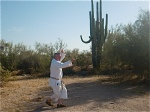 You may wish to view my martial arts blog at https://senseijohn.me
You may wish to view my martial arts blog at https://senseijohn.me


